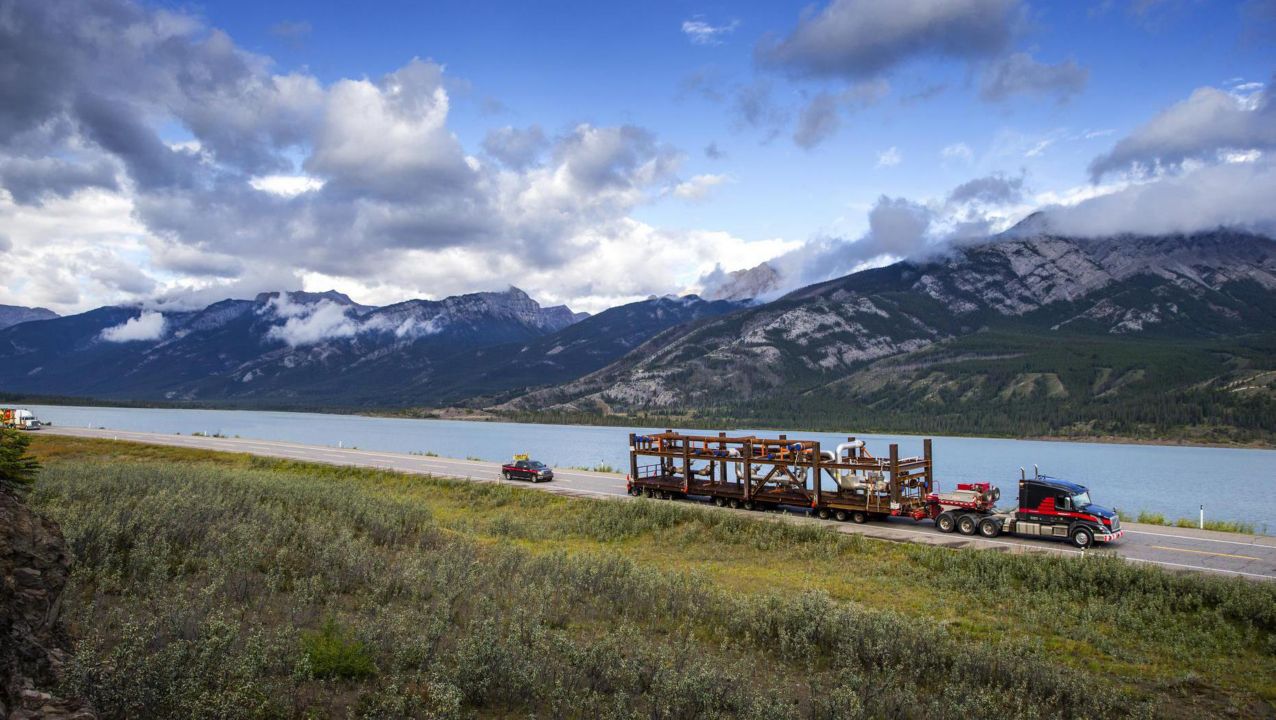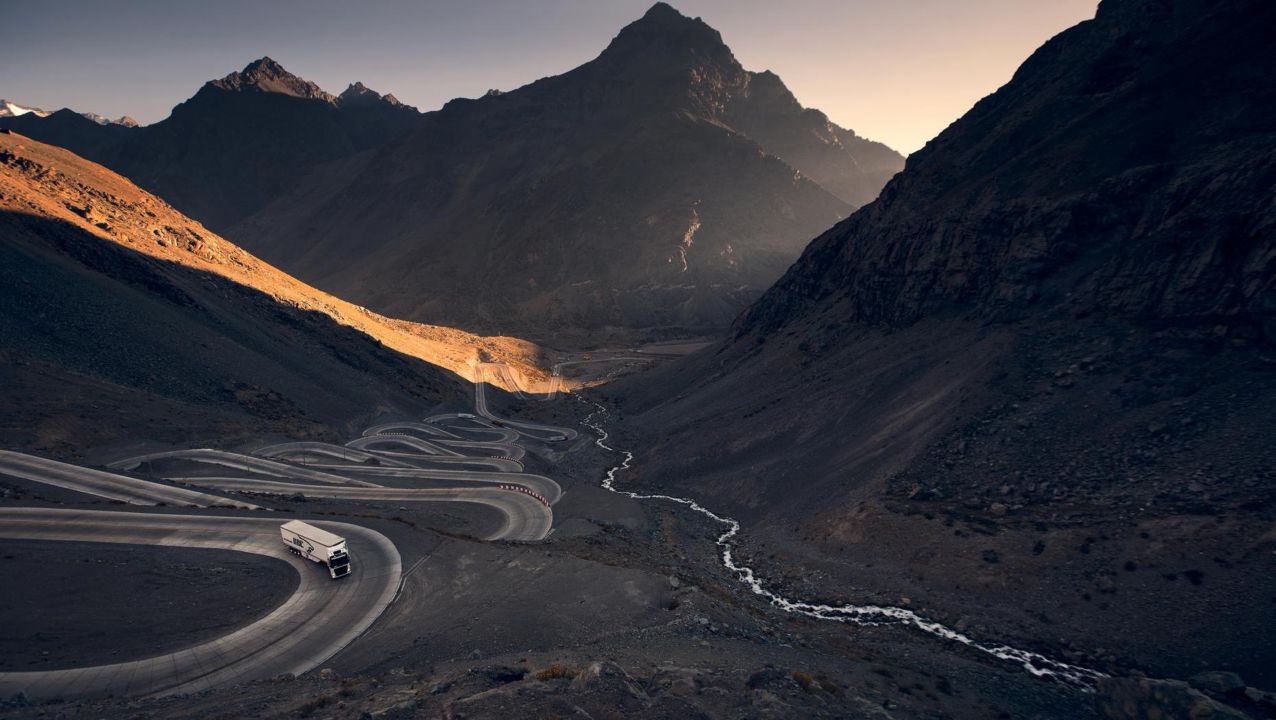Red dust billows up in a cloud behind Maxine Taylor’s truck. Barrelling down the road at 90 kilometres an hour, the horizon stretches out ahead of her, shimmering in the sweltering Australian heat. This is the outback.
Outside, it’s 48 degrees Celsius—but it could be much worse. Temperatures in the outback often reach into the high fifties.
“You have to drink plenty of water or else you’ll dehydrate real fast out here,” she explains, matter of fact. “The heat really gets to you. You wouldn’t survive without air-con.”
The 52-year-old grandmother is hundreds of miles from anywhere. It’s lonely out here. There are no signs of life except the occasional cow, camel or dingo crossing the road—or another company truck coming in the opposite direction.
You have to drink plenty of water or else you’ll dehydrate real fast out here.
She cranks up the volume on the stereo and sings along to Aussie rock music legend, Jimmy Barnes. It gets the adrenaline pumping, she says. Perhaps it also stops her thinking about the man who should be right there alongside her, driving trucks through the dusty outback.
“My husband actually got me into driving road trains after he fell sick,” she says. “It was so that we could work together during his last years and so that I could support myself financially.”
For three years, the couple worked for the same company, on the same crew and lived together at the camp, seeing each other every night, before Maxine’s husband passed away two years ago.
“It’s something that’s never far from your mind. I think about him every day and I think that I still drive for him, even though he’s not here with us any more.”
Maxine is driving between Woodie Woodie in Western Australia’s remote Pilbara region and the coastal town of Port Hedland. It’s a 800 kilometre round trip—one she will make every day (one day off for a fatigue break after six runs) for eight weeks before getting two weeks off to head home to Brisbane, 5,000 km away on Australia’s east coast. On the inbound journey her four huge trailers are empty. On the way to port they are laden with manganese—a black metallic rock that looks a bit like coal and is used as an alloy to make stainless steel.
The days are long. Usually a round-trip takes about 12 to 13 hours but it can creep up to 17 if a tyre gets blown, if there’s a breakdown or if conditions on the road are below optimal. When the wet season rolls around, you can be stuck out here for days waiting for the floodways to drop.
The mine works on rolling shifts, so as soon as Maxine arrives back at base and tips off her load, another driver jumps in her seat and repeats the entire journey. When he arrives back in 12 or 13 hours time, she’ll jump right back in the driver’s seat, hit play on her favourite Jimmy Barnes album, and do it all over again.
There are not too many women who work out here, and Maxine admits she has only spotted one other female driving road trains. When asked about her profession, a lot of people just don’t believe that she actually drives road trains—especially people that she meets for the first time. “They just say ‘wow, you don’t look like one’,” she says.
Nevertheless, Maxine always wanted to be a truck driver. Her father was a truck driver, just like her late husband, and she herself just likes driving as it feels very natural. And even though she might be a woman in a masculine working environment, she knows that the men respect her—and she respects them, too.
The boys are fantastic. They’re always calling me up on the radio, ‘Max, are you OK?’ We all do it. It’s not because I’m a girl. We all just look out for each other. It is a long time we’re here, so we are family.
“The boys are fantastic,” she says. “If you stop or break down they pull up and say ‘have you got enough water, have you got enough food?’ Or they’ll stop and try and help you. We get on famously, and they’re always calling me up on the radio, ‘Max, are you OK?’ We all do it. It’s not because I’m a girl. We all just look out for each other. It is a long time we’re here, so we are family.”
Maxine and her colleagues regularly have a barbecue with a few drinks and lots of talk, laughter and jokes to keep the morale up.
“We all understand each other, everyone is really friendly and everyone just gets on. You have to in this sort of environment because we spend more time with each other than we do with our families.”
Her own family is spread around Australia. She keeps a family home in Brisbane, where one of her three adult children lives. But her two other children live further south in New South Wales. She has two granddaughters and, she says with obvious delight, a grandson “on the way”.
“Sometimes I get lost in my thoughts,” she says. “Your mind wanders a little bit. I don’t see my family very often. It doesn’t really upset me. It’s always good when we catch up. I guess I’ve just got used to it.”
The decision to keep her house in Brisbane— and with it, a mortgage –is one of the key reasons she says she’s still driving trucks. But even though she’s lived there for 25 years, it’s the mine camp at Port Hedland she refers to as “home” these days.
“After eight weeks I do look forward to going home to Brisbane, but when I’m at home—because there’s nobody there—I look forward to coming back. The environment we live in, the camp environment, it’s great.”
Out here, the drivers don’t just become attached to each other. They become attached to their big Volvo rigs, too. To cart the weights that the company carry, the trucks must get serviced at least once a week, and the drivers need to fuel them up and do pre-start checks every day in order to keep them going 24-7.
“They’re very comfortable to ride in, everything’s smooth and we look after them as if they were our own truck. You’re in the same truck all the time so you keep it clean and you look after it. If they (the company) throw someone in it and they don’t look after it, I get very upset” Maxine says and adds: “My father actually had a Volvo. It just so happens I’m driving a Volvo too, so it’s very close to my heart.”
As much as she loves her truck and the lifestyle that comes with it, Maxine is also considering a life after hauling manganese through the desert.
“I think I’d probably like to do it for the next five years and then retire maybe,” she says. “I don’t know what I’ll do actually. Probably go and spend more time with my family in New South Wales.”
But for the moment, she says she’s going to enjoy every minute of her days on the road—cranking up the stereo and having a laugh with “the boys” on the two-way radio.
“I just enjoy it,” she says. “I hope my husband would be really proud of me for what I’m doing. I think he would be.”
The Truck
Truck: “Quad” road train.
Model: Volvo FH16.
Engine: 700hp, Torque 3,150 Nm with I-Shift.
Tractor: 10X6 (twin steer tri drive).
Trailer: 4 trailers - 2 “A” trailers, 2 dollies and a B-double (7 piece combination in all).
Weight: 175 tonnes (gross combination weight).
Payload: Exceeds 113 tonnes.
Length: 53.5 metres.
Wheels: 84.
Fuel: Up to 1,840 litres capacity. (There is virtually nowhere to fuel between the various mines and Pt Hedland and leads exceeding 800km’s are common).
Features: Tailored for hot and extreme conditions.
- Ice Packs to protect driver in case of unforseen event.
- Bull bars to protect the rig from wildlife strikes.
- Special cooling features to manage high risk items like batteries and differentials.


